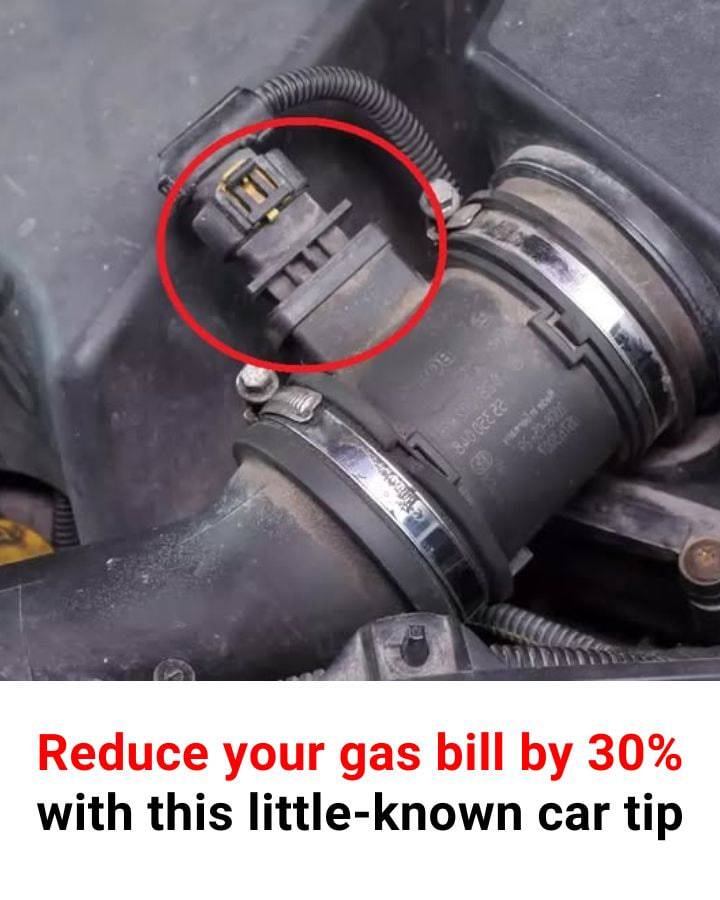If you’re looking to reduce your fuel bill by up to 30%, there’s one often-overlooked car component you should check immediately: the mass air flow (MAF) sensor. This small engine part may not get much attention, but it plays a critical role in your car’s fuel efficiency. When the MAF sensor becomes dirty or starts to fail, your vehicle can end up burning far more fuel than necessary.

The good news? With a simple cleaning or replacement, you could be saving hundreds at the pump each year. The MAF sensor measures the amount of air entering your engine and sends this data to the engine control unit (ECU), which uses it to determine the right amount of fuel to inject. When the sensor is dirty or faulty, the ECU gets the wrong readings and delivers the wrong air-fuel mixture. This results in the engine burning too much fuel, causing poor performance and higher fuel consumption. Imagine a chef guessing how much flour goes into a cake—too much or too little and the recipe fails. A bad MAF sensor can cause high fuel usage, loss of engine power, black smoke from the exhaust, engine misfires, and unstable idling.
These issues are not only frustrating but also cost you more every time you fill up. Real-life examples show just how powerful this fix can be. A 2012 Toyota Corolla owner who cleaned the MAF sensor saw fuel usage drop from 12 to 8.5 liters per 100 km—nearly 30% savings. A 2015 Ford Focus owner reported a reduction from 10.5 to 8.2 liters per 100 km after replacing the sensor. Even just cleaning the sensor on a 2010 Honda Civic improved fuel efficiency by 15%. Cleaning a MAF sensor can typically improve your fuel economy by 5% to 20%, while replacing a damaged one can restore full efficiency, leading to savings up to 30%. For a car that uses 7 liters per 100 km and drives 15,000 km annually, a 20% improvement could save you around $300 a year based on a fuel price of $1.50 per liter.
To address the problem, start by cleaning the MAF sensor using a specialized cleaner—never use household products, as they can cause damage. If cleaning doesn’t help, replacing the sensor can cost anywhere from $30 to $150 depending on your vehicle. You can also use an OBD2 scanner to check for diagnostic trouble codes like P0101 through P0103, which are common indicators of MAF issues. Addressing the MAF sensor early on can prevent further damage to your engine and save you a considerable amount of money. But that’s just one part of keeping your fuel costs low.
Your behavior at the gas pump can also have a huge impact on your budget. One common mistake is topping off your tank after the pump shuts off. This can damage the vapor recovery system and waste fuel. Another overlooked habit is fueling on weekends when prices are typically higher—most experts agree that Mondays and Tuesdays are the best days to find lower gas prices. Always compare gas stations using apps or websites that show you the cheapest gas in your area rather than going to the most convenient one. Loyalty programs from major chains like Shell, Exxon, and Circle K can also earn you discounts or points, especially if you frequently fill up at the same station. Waiting until your gas light comes on is another costly error. Running on near-empty can damage your fuel pump and leave you stranded. Buying premium gas when your car doesn’t need it is another big waste. According to the Federal Trade Commission and AAA, drivers waste billions every year on premium fuel that provides no benefit for cars not designed to use it. Don’t forget tire pressure either—underinflated tires reduce fuel efficiency significantly. Most gas stations offer air for a small fee, and it’s worth checking your pressure when you fill up. Lastly, using a rewards credit card with gas cashback benefits is a smart way to save every time you fuel up. With just a little attention to your car’s MAF sensor and smarter habits at the pump, you can reduce your gas bill dramatically and keep your car running efficiently.





